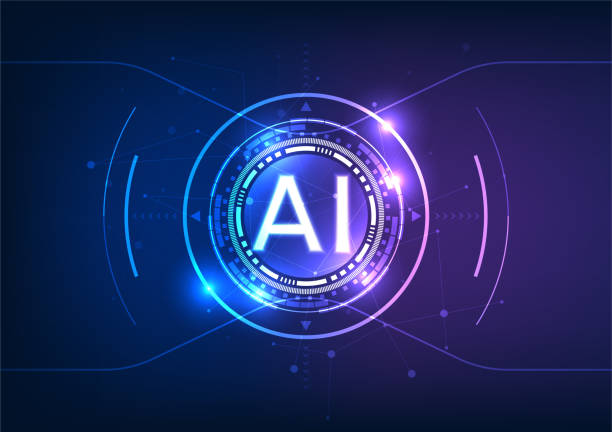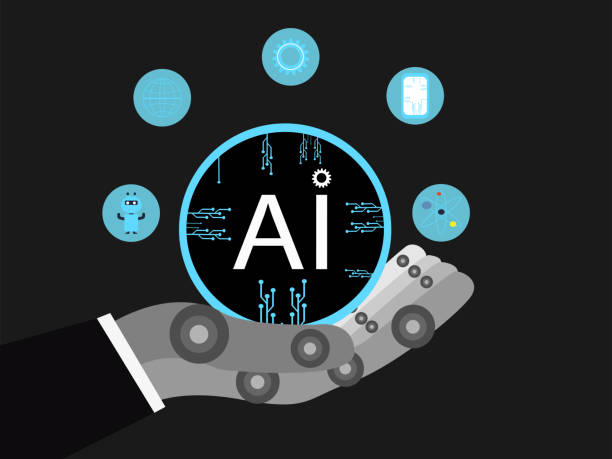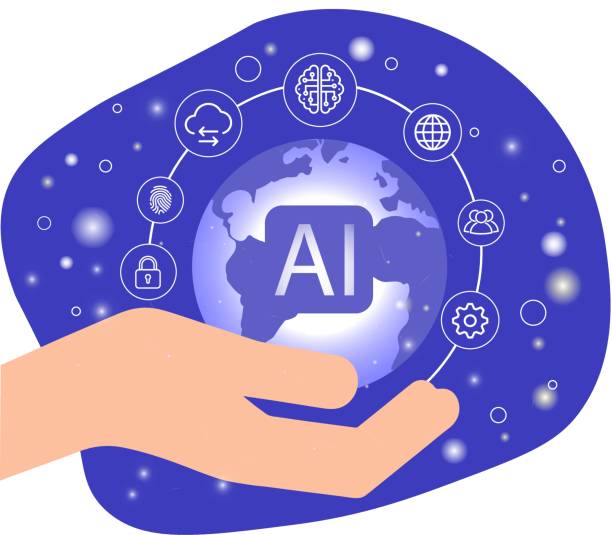What is an AI Assistant and What are its Applications?

#Artificial_Intelligence (AI) is rapidly evolving, and #AI_Assistants, as one of its most important achievements, have influenced our lives.
An AI assistant is a software that uses machine learning algorithms and natural language processing (NLP) to perform various tasks, answer questions, provide recommendations, and generally assist users in their daily activities.
Common applications of AI assistants include:
- Answering questions and providing information
- Task management and scheduling
- Language translation
- Text summarization
- Content generation
- Customer support
AI assistants are also used in various industries such as healthcare, education, financial services, and retail.
These tools can help improve productivity, reduce costs, and provide better customer service.
Virtual assistants like Siri and Alexa are well-known examples of AI assistants widely used.
In fact, an AI assistant is a powerful tool that can help individuals and organizations perform various tasks, making life easier and more efficient.
Don’t have a corporate website yet and missing out on online opportunities? With professional corporate website design by Rasawep,
✅ Double your business credibility
✅ Attract new customers
⚡ Free consultation for your corporate website!
Different Types of AI Assistants and Their Capabilities

Artificial Intelligence (AI) assistants are divided into different categories based on their function and application.
Generally, they can be categorized into two main types: voice assistants and text-based assistants.
Voice assistants like Siri, Alexa, and Google Assistant interact with users through voice commands and are capable of performing tasks such as playing music, setting reminders, answering questions, and controlling smart devices.
These types of assistants are primarily designed for use in smartphones, smart speakers, and cars.
Text-based assistants like ChatGPT and Bard interact with users through text and are capable of performing tasks such as content generation, language translation, text summarization, and answering complex questions.
These types of assistants are primarily designed for use on websites, messaging apps, and content creation platforms.
Additionally, AI assistants can also be categorized based on their specialized domain.
For example, medical AI assistants can help doctors diagnose diseases and provide appropriate treatments, while financial AI assistants can help investors manage capital and make financial decisions.
Choosing the right type of AI assistant depends on the specific needs and goals of the user.
With continuous advancements in technology, it is expected that the capabilities of AI assistants will increase day by day, playing a more significant role in our lives.
Step-by-Step Guide to Setting Up and Using an AI Assistant

Setting up and using an Artificial Intelligence (AI) assistant is usually a simple and easy process.
Here is a step-by-step guide to getting started with these tools.
First, you need to choose a suitable AI assistant.
For voice assistants like Siri and Google Assistant, simply turn on your device (such as a smartphone or smart speaker) and follow the activation instructions.
For text-based assistants like ChatGPT, you need to visit the relevant website or app and create a user account.
After setup, you can interact with your AI assistant.
For voice assistants, simply state your voice commands in natural language.
For text-based assistants, you can type your questions or requests in text format.
It is important to state your commands and requests clearly and concisely so that the AI assistant can understand them correctly.
You can also customize the settings of your AI assistant according to your needs.
For example, you can change the language, voice, and other settings.
With practice and experience, you can learn how to effectively use your AI assistant and benefit from its capabilities.
An AI assistant can help you perform various tasks and make life easier and more efficient.
AI Assistant
| AI Assistant Name | Type | Capabilities |
|---|---|---|
| Siri | Voice | Answering questions, setting reminders, controlling smart devices |
| ChatGPT | Text-based | Content generation, language translation, text summarization |
Best Practices for Optimizing Interaction with an AI Assistant

To get the best results from interacting with an Artificial Intelligence (AI) assistant, it is essential to follow a few key tips.
Firstly, try to express your commands and requests in simple and clear language.
Avoid using complex and ambiguous sentences.
Secondly, clarify your goal before starting the interaction.
Know what you want from the AI assistant and what you expect.
Thirdly, if needed, use appropriate keywords so that the AI assistant can better understand your intention.
For example, if you want to get information about a specific topic, use keywords related to that topic in your request.
Also, it is important to pay attention to the feedback from the AI assistant.
If the AI assistant did not respond correctly to your request, try changing your request or providing more information.
With practice and experience, you can learn how to interact effectively with the AI assistant and benefit from its capabilities.
The AI assistant is essentially a learning tool and improves its performance with each interaction.
AI Assistant
Did you know your company’s website is the first point of contact for 75% of potential customers?
Your website is the face of your brand. With **Rasawep**’s corporate website design services, create an online presence that earns customer trust.
✅ Create a professional and lasting image for your brand
✅ Attract target customers and increase online credibility
⚡ Get a free consultation from **Rasawep** experts!
Privacy and Security in Using AI Assistants

Privacy and information security are of paramount importance when using Artificial Intelligence (AI) assistants.
Since AI assistants collect and process users’ personal information, it is essential for users to be aware of how this information is used and to take necessary measures to protect their privacy.
Before using any AI assistant, carefully read its privacy policy.
Ensure you know what type of information is collected, how it is used, and with whom it is shared.
Also, review your AI assistant’s privacy settings and adjust them according to your preferences.
For example, you can limit the AI assistant’s access to your location information or prevent it from storing your conversation history.
Furthermore, it is important to use a strong password for your user account and change it regularly.
Also, avoid sharing your sensitive information with your AI assistant.
Remember that an AI assistant is a tool and should not be fully trusted.
AI Assistant.
For more information, you can refer to Wikipedia.
The Future of AI Assistants and Their Impact on Our Lives

The future of Artificial Intelligence (AI) assistants appears very bright and promising.
With continuous advancements in technology, AI assistants are expected to gain more capabilities and play a more significant role in our lives.
In the future, AI assistants will be able to perform more complex tasks, make better decisions, and generally help individuals and organizations with various matters.
For example, AI assistants can assist doctors in diagnosing diseases and providing appropriate treatments in healthcare, help students learn and progress academically in education, and assist companies with marketing, sales, and customer services in business.
Furthermore, AI assistants are expected to be increasingly integrated into various devices, becoming an inseparable part of our lives.
From smartphones and smart speakers to cars and home appliances, AI assistants will be everywhere, helping us with our daily tasks.
However, it is important to also consider the potential challenges and risks arising from the development of AI assistants.
Issues such as privacy, information security, bias, and job displacement due to automation require serious consideration and attention.
AI Assistant
Comparison of AI Assistants Available in the Market

The Artificial Intelligence (AI) assistant market is witnessing increasing competition among various companies.
Each of the AI assistants available in the market has its unique features, capabilities, strengths, and weaknesses.
Here, we compare some of the most popular AI assistants.
Siri, Apple’s voice assistant, is pre-installed on iOS and macOS devices and offers capabilities such as answering questions, setting reminders, playing music, and controlling smart devices.
Google Assistant, Google’s voice assistant, is installed on Android devices and Google smart speakers and offers similar capabilities to Siri, but provides more information to users due to its access to the Google search engine.
Alexa, Amazon’s voice assistant, is installed on Amazon smart speakers and offers capabilities such as playing music, controlling smart devices, online shopping, and ordering food.
ChatGPT, OpenAI’s text-based assistant, is a large language model that offers capabilities such as content generation, language translation, text summarization, and answering complex questions.
Choosing the best AI assistant depends on the user’s specific needs and preferences.
AI Assistant.
For more information on this topic, refer to this link.
| AI Assistant Name | Developer Company | Type |
|---|---|---|
| Siri | Apple | Voice |
| Google Assistant | Voice | |
| Alexa | Amazon | Voice |
| ChatGPT | OpenAI | Text-based |
How to Use AI Assistants in Your Business

Artificial Intelligence (AI) assistants can be powerful tools for improving productivity and reducing costs in businesses.
Applications of AI assistants in business include: customer support, automation of repetitive tasks, content generation, data analysis, and marketing.
By using an AI assistant, you can answer customer questions 24/7, automate your business processes, generate engaging and relevant content, analyze your data, and run effective marketing campaigns.
For example, you can use a chatbot to answer frequently asked customer questions, use an AI assistant to generate financial reports, or use an AI content generation tool to write blog articles.
To get the best results from using an AI assistant in your business, you need to have a clear strategy.
First, identify your business needs.
Then, choose the appropriate AI assistant.
Finally, provide the necessary training to your employees so they can effectively use this tool.
AI Assistant
Does your current corporate website present a worthy image of your brand and attract new customers?
If not, turn this challenge into an opportunity with Rasawep’s professional corporate website design services.
✅ Significantly improves your brand’s credibility and image.
✅ Smooths the path for attracting leads and new customers.
⚡ For a free and specialized consultation, contact Rasawep now!
Advanced Tips and Tricks for Using AI Assistants

After getting acquainted with the basics of using Artificial Intelligence (AI) assistants, you can move on to more advanced tips and tricks to utilize the maximum capacity of these tools.
One of these tips is using combined commands.
Instead of expressing your commands separately, you can state them in a combined command.
For example, instead of saying “What’s the weather like?” and then “Set a reminder for 8 AM,” you can say “What’s the weather like and set a reminder for 8 AM.”
Another tip is using specific keywords.
By using specific keywords, you can help the AI assistant better understand your intention.
For example, if you want to play a specific song, mention the song name and artist name in your command.
Additionally, you can use your AI assistant’s customization features to adjust it to your needs.
For example, you can change your AI assistant’s name, change its language, or change its privacy settings.
Through experimentation and experience, you can discover other tips and tricks that will help you use your AI assistant more effectively.
AI Assistant.
Challenges and Limitations of AI Assistants

Despite numerous advantages, Artificial Intelligence (AI) assistants still face challenges and limitations.
One of these challenges is the inability to fully understand natural language.
AI assistants still cannot comprehend all the subtleties and complexities of human language and may struggle to respond to complex or ambiguous questions.
Another challenge is the inability to think critically and creatively.
AI assistants can process information and provide appropriate answers, but they cannot think like humans, generate new ideas, or solve complex problems.
AI Assistant.
Moreover, AI assistants may provide biased or discriminatory responses due to biases in training data.
Also, issues such as privacy and data security require serious attention.
With continuous advancements in technology, it is expected that many of these challenges and limitations will be overcome, and AI assistants will become more powerful and efficient tools.
Frequently Asked Questions
| Row | Question | Answer |
|---|---|---|
| 1 | What is an AI assistant? | A software program that performs tasks or services for an individual based on verbal or textual commands. |
| 2 | Name a few examples of AI assistants? | Siri, Google Assistant, Alexa, and Cortana. |
| 3 | How do AI assistants work? | They use Natural Language Processing (NLP), Machine Learning, and Artificial Intelligence to understand user input and provide responses or perform tasks. |
| 4 | What can an AI assistant do? | Answer questions, set reminders, play music, send messages, manage calendars, and control smart devices. |
| 5 | What are the benefits of using an AI assistant? | Increased productivity, quick access to information, assistance for individuals with disabilities, and simplification of daily tasks. |
| 6 | Are AI assistant responses always accurate? | No, they may sometimes make mistakes or provide outdated information, especially on complex or sensitive topics. |
| 7 | What are the privacy concerns regarding AI assistants? | Recording and storage of voice/text data, potential for unauthorized access, and use of data for advertising purposes. |
| 8 | What will the future of AI assistants be like? | Becoming smarter, greater integration with devices and platforms, deeper understanding of emotions, and ability to perform more complex tasks. |
| 9 | Do AI assistants learn from users? | Yes, through machine learning and data collection from previous interactions to improve performance and personalize responses. |
| 10 | What is the difference between an AI assistant and a chatbot? | An AI assistant has the ability to perform a wider range of tasks beyond just conversation and is often integrated with an operating system or hardware, while a chatbot is primarily designed for conversation or answering specific questions. |
And other advertising services by RasaWeb Advertising Agency:
- Smart Conversion Rate Optimization: Designed for businesses looking to attract customers through intelligent data analysis.
- Smart Content Strategy: Professional optimization to attract customers using customized user experience.
- Smart Advertising Campaign: An innovative service to increase customer acquisition through marketing automation.
- Smart Custom Software: A professional solution for attracting customers focusing on SEO-driven content strategy.
- Smart Data Analysis: A combination of creativity and technology for digital branding through exclusive programming.
And hundreds of other services in the field of internet advertising, advertising consultation, and organizational solutions
Internet Advertising | Advertising Strategy | Advertorials
Resources
AI and Personal AssistantsApplications of AI in Daily LifeThe Future of Smart AssistantsAI Guide for Businesses: Strategic and Practical Approach
? With Rasawep Afarin, the future of your business in the digital world is guaranteed! With our expertise in providing comprehensive digital marketing solutions, including corporate website design and advanced SEO strategies, we transform your online presence and accompany you on the path to sustainable growth and success.
📍 Tehran, Mirdamad Street, next to Bank Markazi, Kazerun Jonubi Alley, Ramin Alley, No. 6

